Recent Articles
Popular Makes
Body Types
2021 Porsche 911 Turbo S Road Test and Review

2021 Porsche 911 Turbo hero ・ Photo by Porsche
The 2021 Porsche 911 Turbo S is the greatest sports car in the world. Anyone that disagrees probably hasn’t driven one. The epiphany hits us somewhere between Los Angeles and Santa Barbara, as we roll along the crashing surf of the Pacific, past the rolling green hills of the Los Padres National Forrest. We say it again, out loud this time: This is the greatest sports car in the world.
Hyperbole? Maybe, but no other sports car we’ve driven offers so much speed combined with so much control. That’s our conclusion after driving the 911 Turbo all over Southern California for two straight days, from the twisty two-lanes above Malibu to the wide-open desert stretches of the Mojave. It’s been an amazing journey, as they say on The Bachelor, and we’ve explored every aspect of the machine. This is as good as sports cars get.
Prices start around $205,000.
In all its forms, Porsche’s 911 has been a star since it first appeared in the 1960s. It has always been a special car, and this past year an all-new version was introduced with newfound levels of speed and technology. Since the late 1970s, Porsche has always followed up with more powerful and pricey Turbo versions, which have always been some of the quickest and fastest cars on the planet. This time, however, it has blown the roof off the place.
The 2021 Porsche 911 Turbo S comes in two body styles: Coupe and Cabriolet. The base price for the Coupe is $204,495, including a $995 destination fee, and $217,295 for the convertible, which has a folding soft top. Both feature all-wheel drive and a twice-turbocharged 3.8-liter flat six-cylinder engine that produces 640 horsepower and an awesome 590 lb-ft of torque. That’s 60 hp and 74 lb-ft more than last year’s Turbo S model. Porsche’s new eight-speed version of its PDK automatic transmission is also standard. Although Porsche still offers a true manual transmission in lesser 911 models, it hasn’t offered one in the Turbo model for nearly a decade.
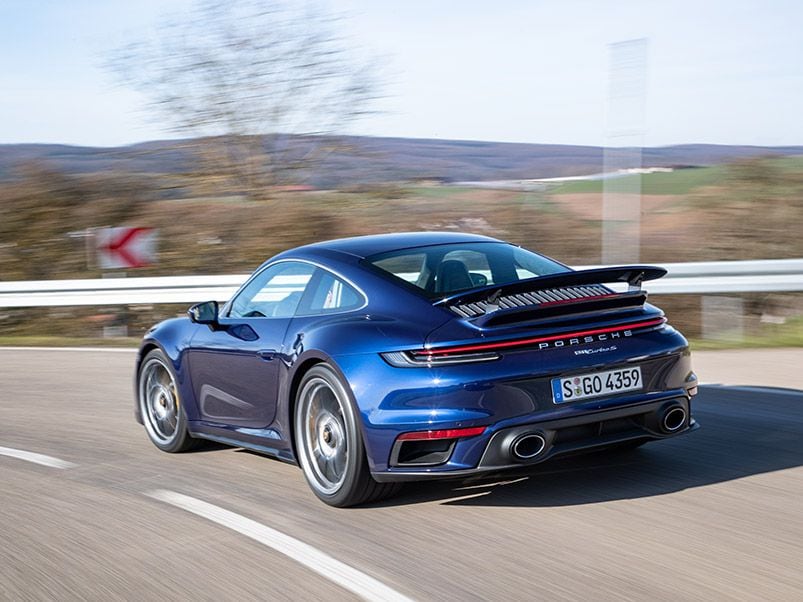
Photo by Porsche
Unique Rear-Engine Configuration
Unlike every other car on the market, the Porsche 911’s engine is in the back. It always has been. And it’s not in the machine’s middle, like it is in the new Chevrolet Corvette or McLarens. This is a rear-engine car. And it’s the last of its kind.
Its sophisticated all-aluminum double overhead cam twin-turbocharged 3.8-liter engine is smooth and incredibly powerful. It redlines at 7,000 rpm, but its power delivery isn’t peaky. It also makes its nearly 600 lb-ft of torque at just 2,500 rpm. Some may yearn for a true manual, but Porsche’s PDK is the best automatic in the world, and the horizontally-opposed six-cylinder revs so quickly that keeping up with the gear changes would be nearly impossible. Unfortunately, Porsche doesn’t allow you to pop the hood and admire the flat-six, which features new larger turbochargers and intercoolers. Sadly, it’s all hidden away.
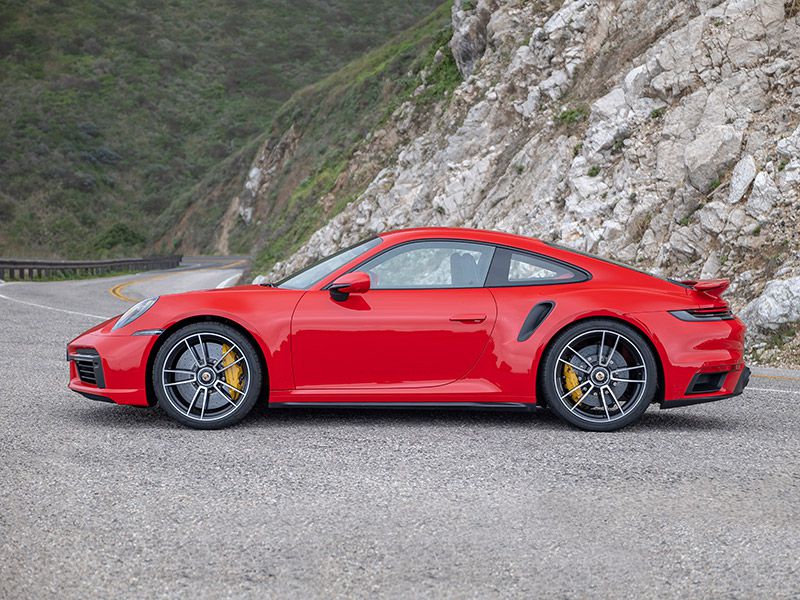
Photo by Porsche
Mind-Bending Acceleration
Use its launch control, which unleashes the car at 5,000 rpm, and the acceleration is mind-altering. Few cars can keep up. The Turbo S hunkers down and explodes off the line with zero wheelspin and enough force to mess with your inner ear. Most passengers are unprepared for the violence of it all and literally scream as if they’ve just fallen off a building. One, despite owning a Porsche Boxster, seemed to fear for his life, blurting out: “Please stop, I have kids.”
Porsche says the 911 Turbo S Coupe like our test vehicle hits 60 mph in just 2.6 seconds, nearly 1.5 seconds quicker than the base 911. And it feels even quicker than that. Its 205-mph top speed makes it one of the fastest cars in the world. These are supercar numbers, in line with cars like the Lamborghini Huracan Evo and McLaren 600LT.
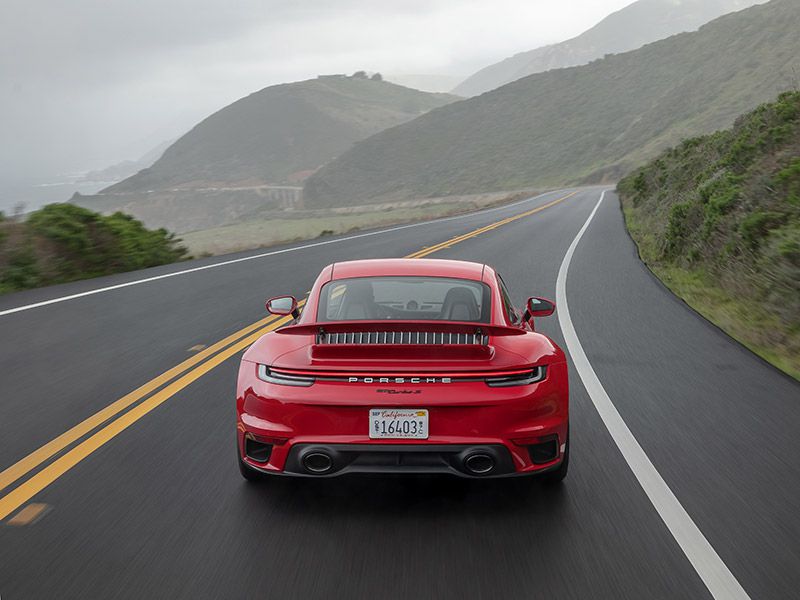
Photo by Porsche
Supercar Handling
If you want to scream with pleasure, drive a 911 Turbo S down a twisty two-lane. It’s one of the best-handling cars available, at any price. No other transportation device is faster on a mountain road. With its all-wheel drive, massive Pirelli tires, and a firm suspension, the Porsche’s grip seems endless and its massive set of standard carbon-ceramic brakes can stop time. Its front brake rotors measure 16.5 inches in diameter, and they’re clamped by 10-piston calipers. Pure race car stuff.
Although this is the largest 911 ever, with a 96.5-inch wheelbase and an overall length of 178.5 inches, the Turbo S feels small from behind the wheel. It seems to shrink around you on the road. At about 3,700 lbs, it isn’t particularly light either, but It doesn’t feel heavy or burdened by physics. Drive it hard and it really comes alive, compressing time from corner to corner and changing direction like it’s attached to the road by more than gravity and vulcanized rubber. It’s unworldly.
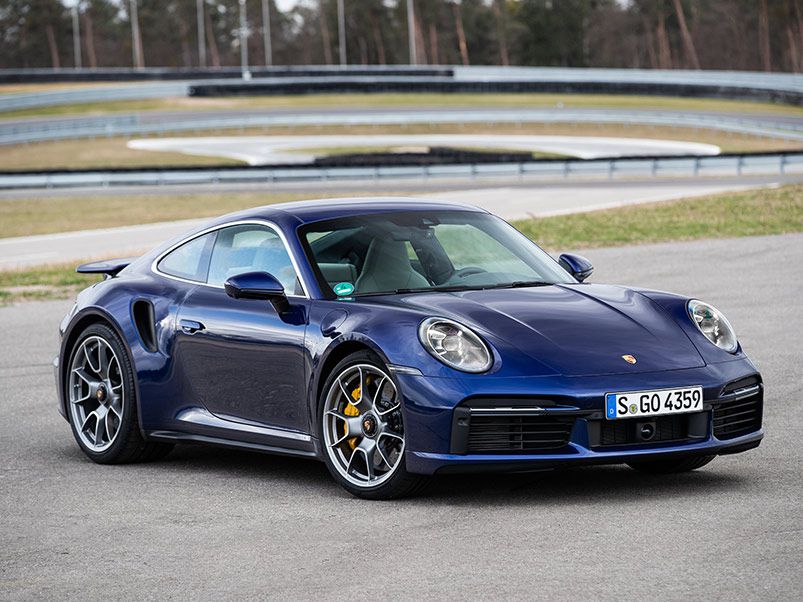
Photo by Porsche
Stiff Ride
Our test car was equipped with the optional PASM sport suspension, which is firmer than the standard setup and lowers the car by almost half an inch. The drop certainly adds a welcome aggression to the Porsche’s stance, but its ride comfort suffers from its recalibrated springs and shocks. Although the firmness of its suspension is adjustable, certain bumps like freeway expansion joints bounce the car around and buck you up out of the seat. And the problem persists in all three of its settings — Normal, Sport, or Sport Plus.
Around town, however, and out in the canyons, the Turbo S isn’t a bucking bronco. In the Normal setting, its suspension is certainly firm, but it doesn’t beat you up. It’s more than comfortable enough for daily driving, and we wouldn’t hesitate to drive it across three states. In a day.
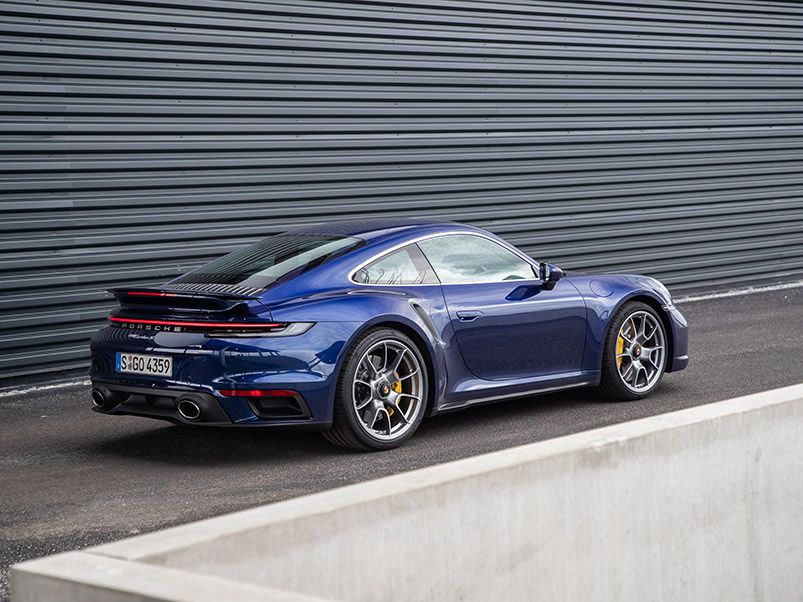
Photo by Porsche
Surprising Fuel Economy
The 911 Turbo S is also surprisingly fuel-efficient when you consider its incredible horsepower and performance. It features a start/stop system, which shuts the engine off at idle to save fuel, and its fuel economy performance is strong for its class. It also has a large 17.6-gallon gas tank, so fuel range isn’t an issue either.
Although its official EPA estimates haven’t been finalized yet, we don’t expect them to be too different from the previous Turbo S, which was rated at 19 mpg city and 24 mpg highway. Although that model wasn’t quite as powerful, its transmission only had seven speeds. During our time with the car, which included liberal use of its throttle, we averaged 16 mpg.
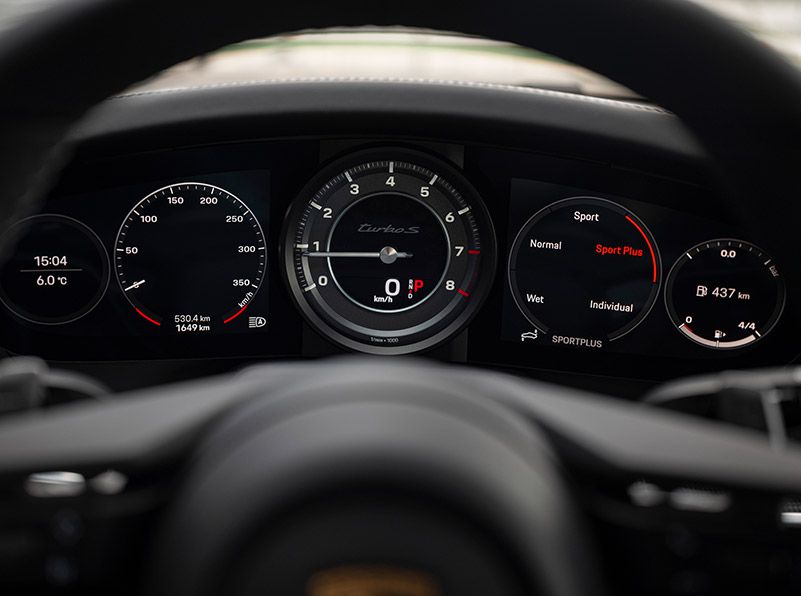
Photo by Porsche
Sharply Dressed Interior
Inside, the 911 Turbo S isn’t very different from the other 911 models. Build quality is extremely high, everything is assembled with precision, and the materials feel right for the Porsche’s big price. There’s also a surprising amount of room up front considering the car’s slight dimensions. The driver’s seat is height-adjustable, and a tilting and telescopic steering wheel is standard along with a massive infotainment screen.
Visibility is excellent. There’s some road roar from its big tires, but that’s to be expected in a sports car. Seat comfort is exceptional, and the seat heaters can make you sweat. Although the 911’s new shifter looks like an electric razor, it’s right where you want it. And its paddle shifters are attached to its leather-wrapped steering wheel, as they should be. In the Porsche tradition, the key is left of the wheel and the tachometer is in the center of the gauge cluster. Perfect. The rear seat is usable for two kids, even pre-teens or one adult with short legs. The seats also fold to increase cargo capacity.
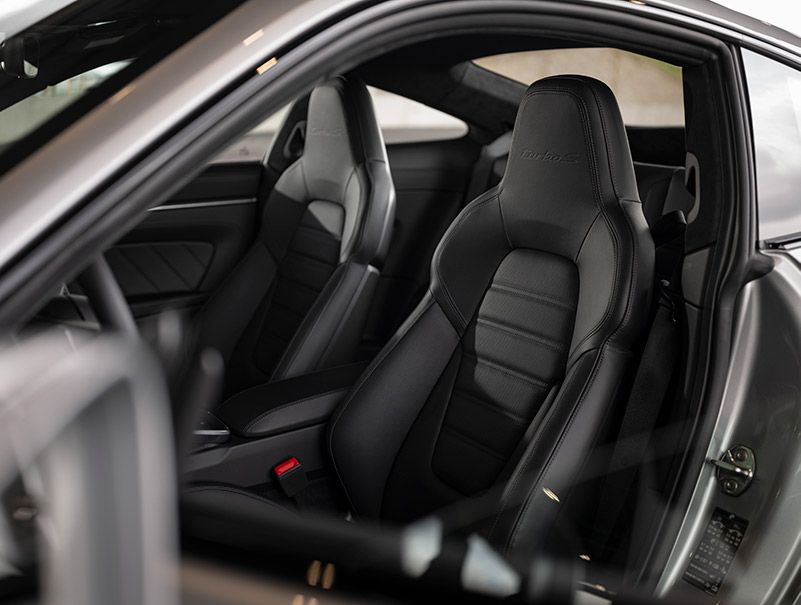
Photo by Porsche
Upfront Trunk
Storage has always been a problem inside Porsche’s legendary sports car, and it still is. Its console bin remains shallow and its door pockets are still tiny. There’s nowhere to conveniently through your cellphone or wallet. However, Porsche has finally given the 911 a real cupholder. And it’s big and well-placed, on the console behind the shifter. Unfortunately, there’s only one.
Because of its unique rear-engine layout and clever packaging, the 2021 911 actually has its trunk in the front. The frunk (front trunk), as it’s called by 911 devotees, is relatively deep and offers 4.4 cubic feet of space. It’s not much, but if you pack properly and maximize the space, it’s just enough for a weeklong road trip for two, especially if you’re willing to utilize the back seat for spillover. It also makes the 911 Turbo S quite Costco-friendly.
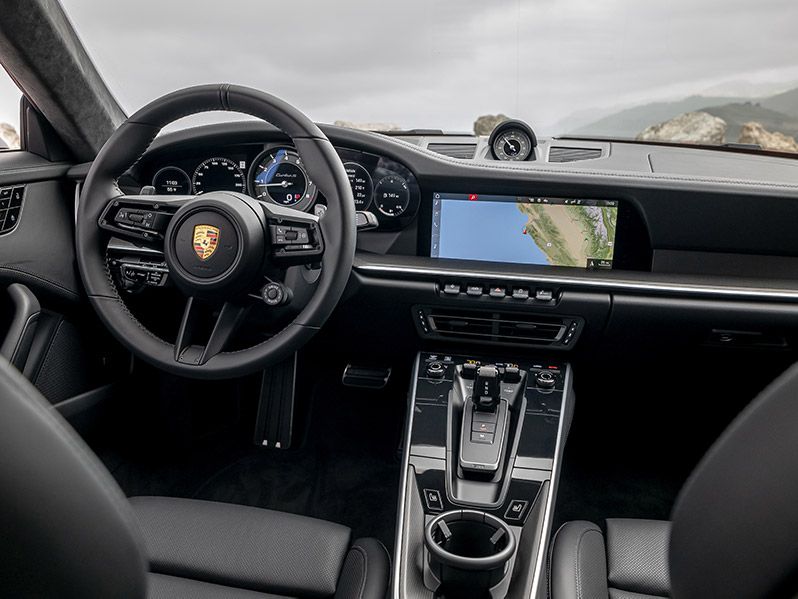
Photo by Porsche
Final Thoughts
The Porsche 911 is like pizza: Even when it’s bad, it’s still pretty good. But there hasn’t been a bad 911 in a very long time. Porsche’s sports car hasn’t become an icon because it’s just a pretty face; even the standard 379-hp Carrera is more than enough for most buyers. But the 2021 Porsche 911 Turbo S takes the 911 legend to an entirely new level of speed and performance. It’s truly something special.
Its steering doesn’t have as much feel as 911s of the past, but the Turbo S is so well sorted, so stable, so capable, so incredibly fast, and so supremely refined it’s laughably easy to drive at seriously illegal speeds. On the highway, 90 mph feels like 70, and its pace in the hills is so extreme the cops are sure to notice. It’s also comfortable enough to be enjoyed every day. If you’re in the market for the ultimate sports car, the 2021 Porsche 911 Turbo S is the car you want.
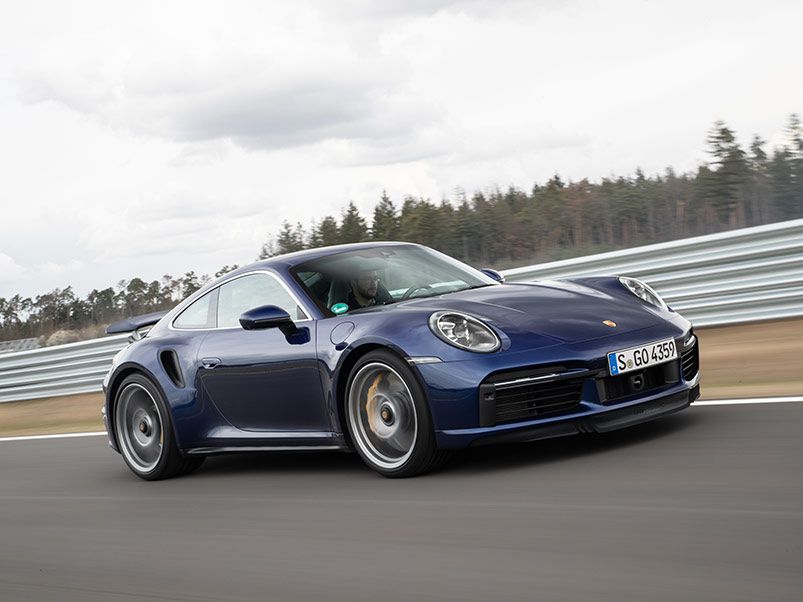
Photo by Porsche